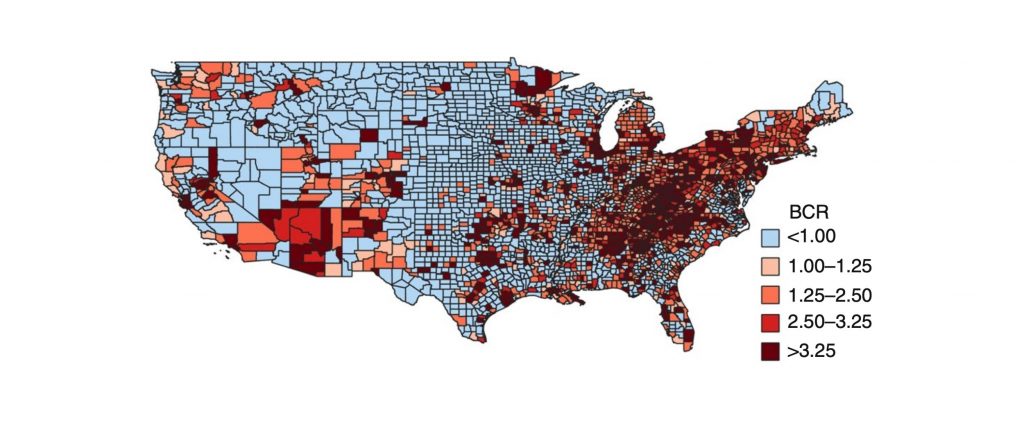A paper describing our method for simulating the spatial dependence of realistic flood events across the USA.
In this paper we seek to understand the nature of flood spatial dependence over the conterminous United States.
We extend an existing conditional multivariate statistical model to enable its application to this large and heterogenous region and apply it to a 40-year data set of ~2,400 U.S. Geological Survey gauge series records to simulate 1,000 years of U.S. flooding comprising more than 63,000 individual events with realistic spatial dependence. A continental-scale hydrodynamic model at 30 m resolution is then used to calculate the economic loss arising from each of these events. From this we are able to compute the probability that different values of U.S. annual total economic loss due to flooding are exceeded (i.e., a loss-exceedance curve). Comparing these data to an observed flood loss-exceedance curve for the period 1988–2017 shows a reasonable match for annual losses with probability below 10% (e.g., >1 in 10-year return period). This analysis suggests that there is a 1% chance of U.S. annual fluvial flood losses exceeding $78Bn in any given year, and a 0.1% chance of them exceeding $136Bn. Analysis of the set of stochastic events and losses yields new insights into the nature of flooding and flood risk in the United States. In particular, we confirm the strong relationship between flood affected area and event peak magnitude, but show considerable variability in this relationship between adjacent U.S. regions. The analysis provides a significant advance over previous national flood risk analyses as it gives the full loss-exceedance curve instead of simply the average annual loss.






